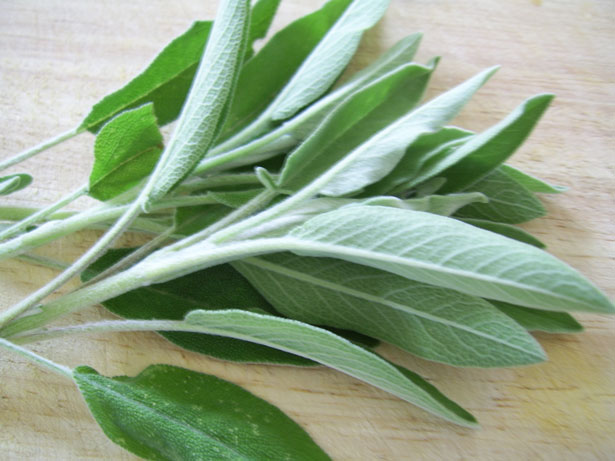This native Mediterranean herb has been enjoyed for
centuries for both its culinary and medicinal uses. The
name comes from a derivative of the Latin salvus ,
meaning "safe," a reference to the herb's believed
healing powers. The narrow, oval, gray−green leaves of
this pungent herb are slightly bitter and have a musty
mint taste and aroma. There's also a variety
called pineapple sage, which has an intensely sweet
pineapple scent. Small bunches of fresh sage are available
year−round in many supermarkets. Choose sage by its
fresh color and aroma. Refrigerate wrapped in a paper
towel and sealed in a plastic bag for up to 4 days. Dried
sage comes whole, rubbed (crumbled) and ground. It
should be stored in a cool, dark place for no more than 6
months. Sage is commonly used in dishes containing
pork, cheese and beans, and in poultry and game
stuffings. Sausage makers also frequently use it to flavor
their products.
centuries for both its culinary and medicinal uses. The
name comes from a derivative of the Latin salvus ,
meaning "safe," a reference to the herb's believed
healing powers. The narrow, oval, gray−green leaves of
this pungent herb are slightly bitter and have a musty
mint taste and aroma. There's also a variety
called pineapple sage, which has an intensely sweet
pineapple scent. Small bunches of fresh sage are available
year−round in many supermarkets. Choose sage by its
fresh color and aroma. Refrigerate wrapped in a paper
towel and sealed in a plastic bag for up to 4 days. Dried
sage comes whole, rubbed (crumbled) and ground. It
should be stored in a cool, dark place for no more than 6
months. Sage is commonly used in dishes containing
pork, cheese and beans, and in poultry and game
stuffings. Sausage makers also frequently use it to flavor
their products.

ليست هناك تعليقات:
إرسال تعليق